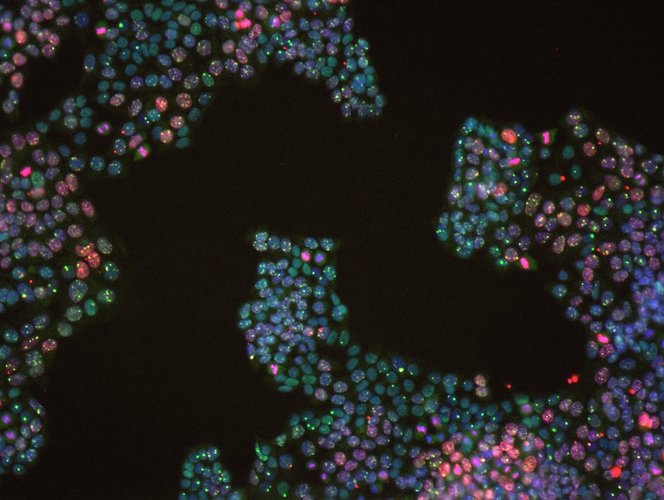When two wrongs make a right: Artificial CRISPR gene disruptions could rescue genetic disease
Share
Defective DNA repair mechanisms can lead to diseases like Fanconi anemia. Utilizing a concept called “synthetic viability”, researchers at CeMM, in international collaboration, found additional gene disruptions that rescue the phenotype of this disease in cell culture and identified the responsible protein complex. The study, published in Nature Communications, intriguingly demonstrates the potential of synthetic viability screens to identify genetic interactions rescuing cells with defects in the DNA damage response.
Sunlight, cellular metabolism or simply faulty DNA replication: DNA damage occurs tens of thousands of times per day in every cell of the body. Hence, a whole arsenal of molecular machineries stand by to repair various forms of damage and maintain cellular function. If those repair mechanisms fail, it can lead to serious diseases, as in the case of the Fanconi anemia pathway: named after the disease, it´s failure leads to impaired repair of DNA interstrand crosslink damage.
The research group of Joanna Loizou at CeMM, in international collaboration, showed with a so-called “synthetic viability” screen that cells with defects in the Fanconia anemia pathway can be rescued by introducing additional genetic defects, targeting genes of the BLM helicase complex. The study was published in Nature Communications (DOI: 10.1038/s41467-017-01439-x).
Using CRISPR/Cas9, the scientists produced a library of viruses able to disrupt almost all of the genes in the human genome individually. Millions of cells with Fanconi anemia defect were infected with those viruses, introducing a single additional gene defect in each cell. Subsequently, DNA interstrand crosslink damage was generated – the kind of DNA damage that should kill the diseased cells. With a high throughput assay, the researchers searched for cells that survived better after disrupting additional genes and found that upon loss of a functional BLM helicase complex, cellular survival of Fanconi anemia cells was increased and the cells behaved more like healthy ones.
This work demonstrates that genome-wide CRISPR/Cas9 screens are suitable to identify genetic “synthetic viable” interaction partners that increase the survival of cells with defective DNA damage repair mechanisms. Above that, the now published study clearly shows that the loss of both components (BLM & Fanconi anemia pathway) is less detrimental for cells than a deficiency of only the Fanconi anemia pathway – an important contribution to the elucidation of this rare genetic disease.
Publication
Martin Moder*, Georgia Velimezi*, Michel Owusu, Abdelghani Mazouzi, Marc Wiedner, Joana Ferreira da Silva, Lydia Robinson-Garcia, Fiorella Schischlik, Rastislav Slavkovsky, Robert Kralovics, Michael Schuster, Christoph Bock, Trey Ideker, Stephen P. Jackson, Jörg Menche and Joanna I. Loizou. Parallel genome-wide screens identify synthetic viable interactions 3 between the BLM helicase complex and Fanconi anemia. Nature Communications, November 1st, 2017. DOI: 10.1038/s41467-017-01439-x.
Funding
This study was supported by the European Molecular Biology Organization (EMBO) and the Austrian Science Fund (FWF).

